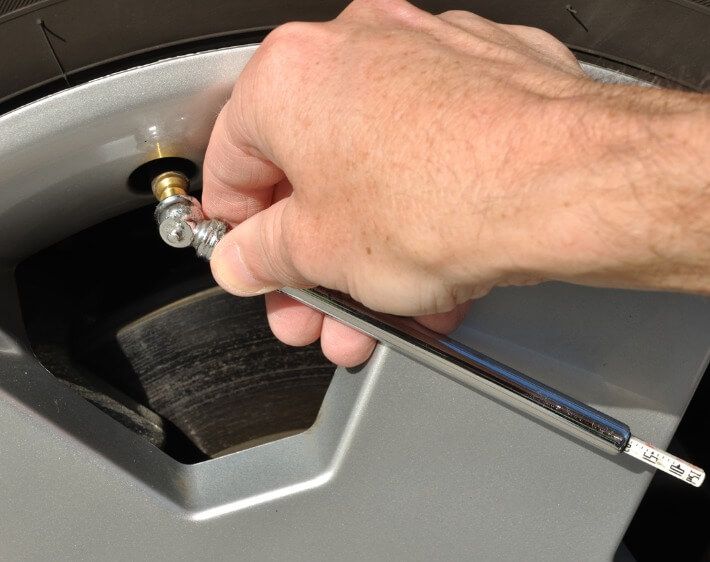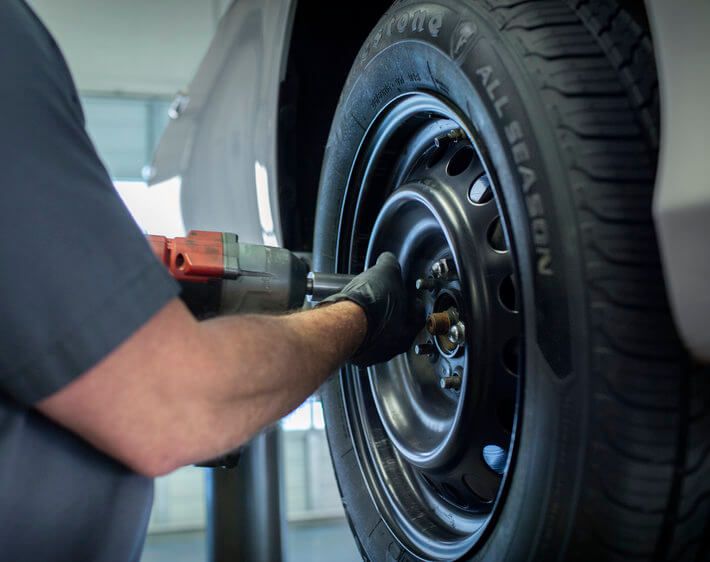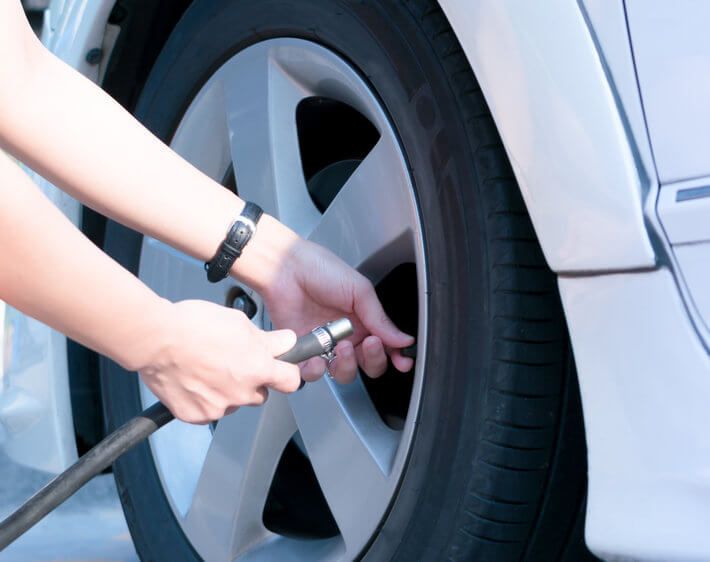Key Takeaways
- Overinflated tires are more prone to blowouts, which can lead to loss of vehicle control and increased braking distance.
- Excessive air pressure can cause tires to wear unevenly, especially down the center, and can result in a harsh, uncomfortable ride.
- Overinflation reduces the tire's contact patch with the road, decreasing traction and potentially compromising vehicle safety features.
- Regularly checking and maintaining tire pressure at the vehicle manufacturer's recommended levels helps ensure safety and tire longevity.
So, you got distracted while you were filling up your tires and accidentally added way too much air. Or, perhaps a friend told you that overinflated tires could improve your gas mileage. The truth is, whatever the reason for it, driving on overinflated tires can be damaging for your car and dangerous for you. Here’s what happens when you put too much air in your tires, and what you can do to restore proper tire inflation. The fix is quick and easy!
What’s the harm in overinflating your tires?
Compromised Safety
There are a variety of issues that can occur if you drive on overinflated tires. Most seriously, overinflated tires are at greater risk for a blowout. A tire blowout can cause you to lose control of your vehicle and negatively affect braking distance, endangering yourself and others on the road.
Additionally, many of the safety features on your vehicle, like your anti-lock braking system, are designed to work when tires are filled to the vehicle manufacturer recommendations. Overinflated tires could compromise some of your car’s driver assistance functions.
Tire Damage and Wear
Overinflating your tires can make them more vulnerable to damage. Like an overfilled balloon, tires filled to their maximum capacity are more stiff and inflexible, which makes them more susceptible to damage from potholes, curbs, or debris. Plus, as a driver or passenger, you’ll feel every bump and dip in the road, and that doesn’t make for a pleasant ride.
Excessive air pressure can also distort the shape of the tire, leading to decreased traction and increased wear and tear down the center of the tire. Depending on the circumstances, repeatedly overinflated tires could wear out more quickly.
A tire bulges in the center of the tread when you overinflate it. The only part of the tire touching the road is a small, skinny patch down the middle. In theory, "this should mean less rolling resistance and increased mileage," notes Popular Mechanics. But in reality? It means center tread wear, an uncomfortable ride, and increased risk for a blowout.
Note that a few PSI over your recommended tire pressure generally won't put you in the danger zone. After all, tire pressure fluctuates with the outside temperature. Your goal is to stay at your car manufacturer’s suggested cold tire pressure.
How do you fix overinflated tires?
Alright, so what happens when you figure out you’ve overinflated your tires? Don't worry—fixing this air pressure problem is a breeze. To get the most accurate tire pressure reading and inflation, follow these steps when your tires are "cold," either in the morning or after the car has been sitting for a few hours. Topping off warm tires may result in over-inflation. Likewise, checking the inflation pressure when the tires are warm may incorrectly suggest the tires are already over-inflated.
Many vehicles have tire-pressure monitoring systems, which will alert you with a TPMS dashboard light when significant underinflation occurs. However, the dash icon only lights up when tire pressure drops 25% or more below the manufacturer's recommended level.
What is your recommended tire pressure?
There are a few places you can find your recommended tire pressure:
- In your vehicle owner’s manual
- On a label posted on the driver’s side door, glove box, or fuel door
- Online, using our tire pressure tool
The recommended tire pressure is the optimal pressure for tires on your specific vehicle. It's calculated by the manufacturer using the total weight and size of your vehicle, its towing and payload capacity, and recommended tire size. Sticking to this number can help you get the best performance from your tires and extend tire lifespan.
Don’t underestimate the importance of proper tire inflation. Keeping your tires at the manufacturer’s recommended tire pressure is key to keeping you safe on the road and getting your money’s worth out of your tires.
Remember, no job is too small for us! Visit your local Firestone Complete Auto Care for a free tire pressure check, we’ll help you inflate (or deflate!) your tires.



